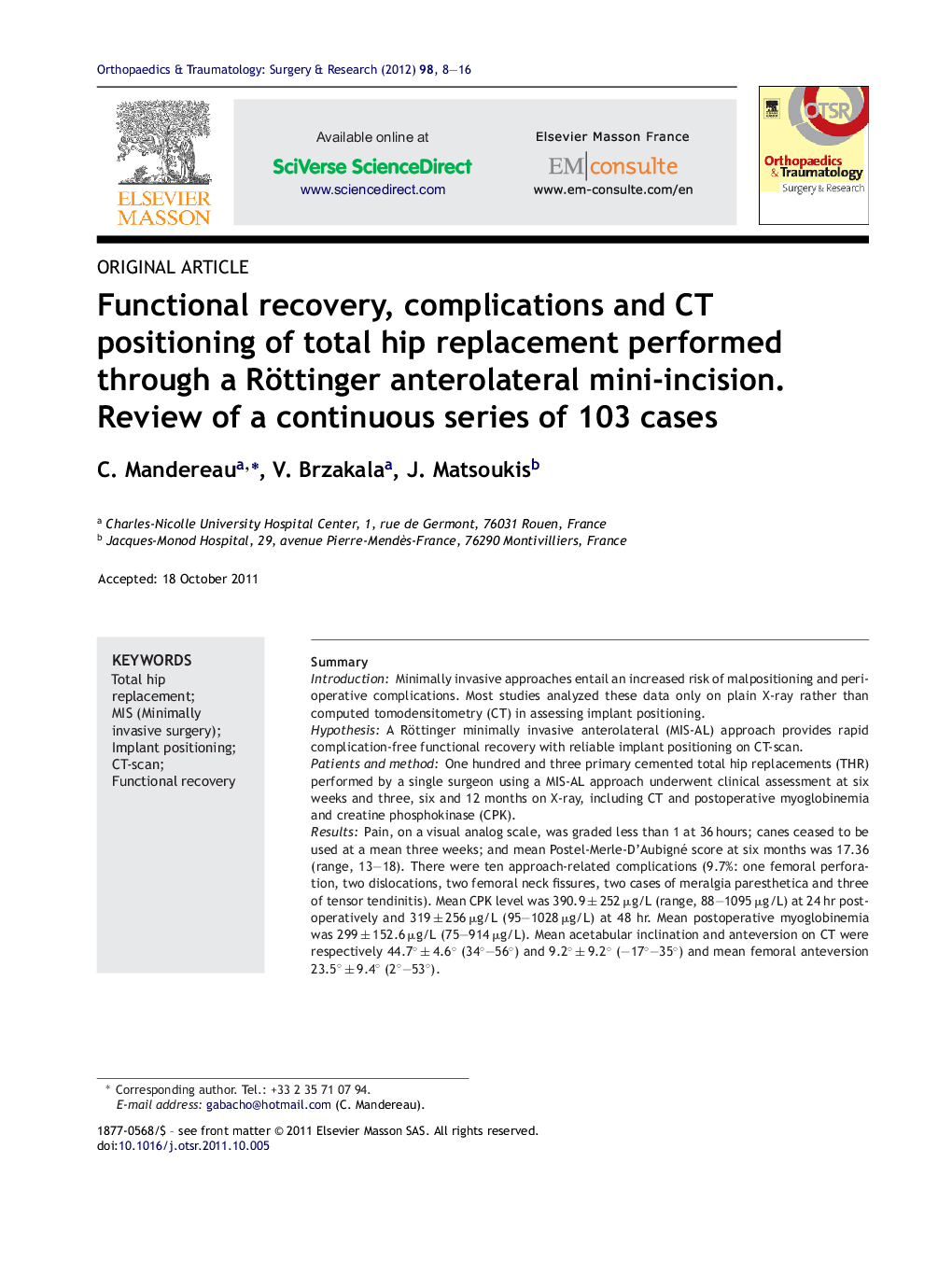| Article ID | Journal | Published Year | Pages | File Type |
|---|---|---|---|---|
| 4081863 | Orthopaedics & Traumatology: Surgery & Research | 2012 | 9 Pages |
SummaryIntroductionMinimally invasive approaches entail an increased risk of malpositioning and peri-operative complications. Most studies analyzed these data only on plain X-ray rather than computed tomodensitometry (CT) in assessing implant positioning.HypothesisA Röttinger minimally invasive anterolateral (MIS-AL) approach provides rapid complication-free functional recovery with reliable implant positioning on CT-scan.Patients and methodOne hundred and three primary cemented total hip replacements (THR) performed by a single surgeon using a MIS-AL approach underwent clinical assessment at six weeks and three, six and 12 months on X-ray, including CT and postoperative myoglobinemia and creatine phosphokinase (CPK).ResultsPain, on a visual analog scale, was graded less than 1 at 36 hours; canes ceased to be used at a mean three weeks; and mean Postel-Merle-D’Aubigné score at six months was 17.36 (range, 13–18). There were ten approach-related complications (9.7%: one femoral perforation, two dislocations, two femoral neck fissures, two cases of meralgia paresthetica and three of tensor tendinitis). Mean CPK level was 390.9 ± 252 μg/L (range, 88–1095 μg/L) at 24 hr postoperatively and 319 ± 256 μg/L (95–1028 μg/L) at 48 hr. Mean postoperative myoglobinemia was 299 ± 152.6 μg/L (75–914 μg/L). Mean acetabular inclination and anteversion on CT were respectively 44.7° ± 4.6° (34°–56°) and 9.2° ± 9.2° (–17°–35°) and mean femoral anteversion 23.5° ± 9.4° (2°–53°).DiscussionFunctional recovery was quick, but with an 8.7% complications rate (excluding four cases of spontaneously resolved tendon pain). CT showed reliable cup positioning, but a wide scatter in femoral anteversion. Elevated muscle enzyme levels possibly testified to approach-related tissue attrition. The MIS-AL approach involves a learning curve to avoid femoral perforation. It provided rapid functional recovery with reliable positioning, at least for the cup, and a low rate of associated complications.Level of evidenceIII, prospective continuous study.
